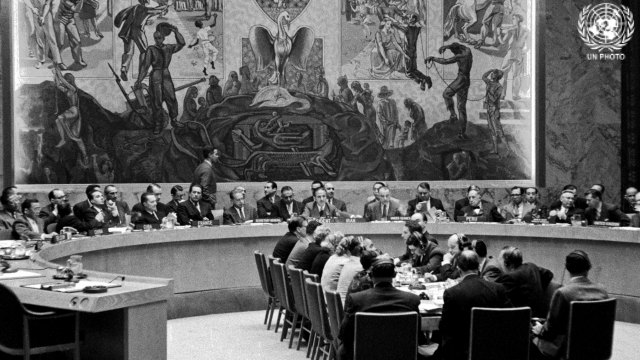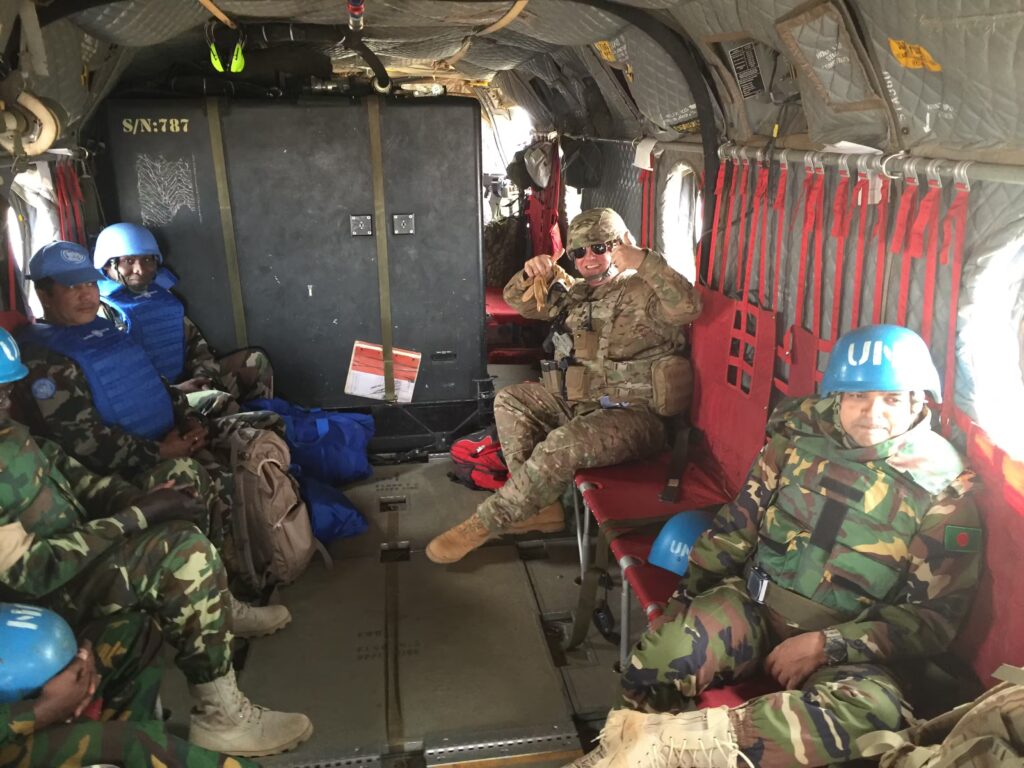As one of the most powerful organs of the United Nations, the Security Council is responsible for maintaining international peace and security. Among its most influential – and controversial – mechanisms to achieve this goal is the veto, granted exclusively to its five permanent members (the “P5”): the U.S., China, France, Russia and the United Kingdom. The veto allows any of these nations to unilaterally block the adoption of any resolution, regardless of the level of other international support.
But how did the veto come to be?
The Origins of the Veto
The veto has roots in the aftermath of World War II, as world leaders sought to establish a new international order to prevent future conflicts. Leaders looked to the failures of the League of Nations, chief of which was the lack of an effective enforcement mechanism. The major Allied powers wanted to ensure they had a decisive role in maintaining global security. This goal led to negotiations at the 1944 Dumbarton Oaks Conference and 1945 Yalta Conference. When key countries and delegates reconvened at the 1945 San Francisco Conference to establish the framework for the UN, the veto was ultimately enshrined as a key feature of the UN Charter.
Article 27 of the UN Charter outlines the voting procedures for the Security Council, stating that substantive decisions require affirmative votes of nine out of fifteen members, including the concurring votes of all five permanent members. This clause effectively grants any of the permanent members the ability to veto resolutions. While the provision was designed to ensure the leadership of the P5 in maintaining peace, the veto’s effect has been a significant amount of geopolitical deadlock in recent years.
Notable Uses of the Veto
Since the UN’s establishment in 1945, the veto has been used over 300 times, primarily by the U.S., Russia (or the Soviet Union), and, to a lesser extent, China, France and the United Kingdom. The veto has often been invoked due to the strategic interests of these nations rather than broader international consensus.
- The Cold War Period – In the early years of the Security Council, marked by intense rivalry between the U.S. and the USSR, the Soviet Union frequently exercised the veto to block the admission of new Member States it viewed as aligned with the West. The U.S. also used its veto, often to shield Israel from resolutions it deemed unfavorable.
- Post-Cold War Era – Following the Soviet Union’s collapse in 1991, the use of the veto declined temporarily but resurged in response to conflicts in the Middle East and other geopolitical crises. Again, the U.S. frequently used its veto to block resolutions critical of Israel, while Russia wielded its power to prevent intervention in Ukraine.
- 21st Century – The UNSC veto has loomed large in modern humanitarian crises. Russia and China, for example, have vetoed resolutions aimed at addressing human rights violations in Syria, while the U.S. blocked resolutions condemning Israeli settlement expansion and, most recently, a flurry of vetoes emerged in the context of the 2024 Israel-Gaza War. The frequent use of the veto in such situations has raised concerns about its impact on international humanitarian law.
Controversies and Calls for Reform
The veto has been widely criticized for fueling deadlock and protecting the geopolitical interests of P5 members at the expense of global peace and security. Critics argue that the veto allows powerful nations to act with impunity, obstruct international justice and undermine the UN Security Council’s credibility. Concerns over the veto are particularly prominent in the context of international responses to genocide, war crimes and humanitarian crises. For instance, the inability of the UNSC to take effective action in Rwanda (1994) and Syria (2011-present) are frequently noted as examples of the agency falling short of its intended purpose.
Some countries have also argued that the composition of the P5 is outdated, reflecting the power structure of 1945 rather than today’s geopolitical realities and evolving global demographics. Emerging powers such as India, Brazil and South Africa have advocated for a more inclusive Security Council, with either an expansion of permanent membership or limitations on veto power.
Various proposals for reforming the veto system include the introduction of a “responsibility not to veto” principle, which would limit the use of the veto in cases involving mass atrocities. Another proposal would require at least two or more P5 members to exercise a veto for it to be effective, thereby reducing unilateral obstructionism.
While the veto was conceived to ensure major powers’ participation in global peacekeeping, the debate over veto reform continues to gain momentum as global power dynamics shift. Whether meaningful changes will occur remains uncertain, but discourse surrounding the veto’s future is likely to shape the evolution of international governance in the coming years.




